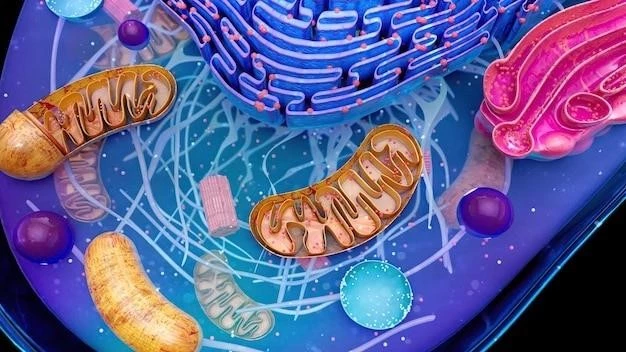Introduction
A 9-year-old boy with multiple abnormalities including severe bilateral microphthalmia, diaphragmatic hernia, and Fallot’s tetralogy is presented, suggesting a potential link to a gene crucial in morphogenesis. Explore the advisory content below for insights into this complex condition.
Overview of Microphthalmia Diaphragmatic Hernia Fallot
A 9-year-old boy presents with severe bilateral microphthalmia, diaphragmatic hernia, and Fallot’s tetralogy, suggesting potential genetic implications in morphogenesis. Syndromic microphthalmia, congenital diaphragmatic hernia, Fryns syndrome, and chromosomal abnormalities are intertwined in this complex condition. Understanding these interlinked anomalies is crucial for effective management and genetic counseling.
Microphthalmia
Microphthalmia is a condition characterized by abnormally small eyes. Syndromic microphthalmia involves additional non-ocular malformations, whereas Microphthalmia with Linear Skin Defects Syndrome presents with skin abnormalities alongside small eyes.
Syndromic Microphthalmia
Syndromic microphthalmia is a rare condition characterized by small eyes along with additional non-ocular malformations. This form of microphthalmia often results from genetic mutations impacting embryonic craniofacial development. Understanding the genetic underpinnings of syndromic microphthalmia is crucial for diagnostic and management purposes.
Microphthalmia with Linear Skin Defects Syndrome
Microphthalmia with Linear Skin Defects Syndrome is a rare condition characterized by small eyes (microphthalmia) accompanied by linear skin defects, typically localized on the face and neck. This syndrome usually presents at birth and the skin abnormalities tend to improve over time, leaving minimal scarring. Other ocular abnormalities can also be observed in addition to the primary features.

Diaphragmatic Hernia
Congenital diaphragmatic hernia (CDH) is identified in approximately 1 in 4,000 newborns and usually accompanies other major congenital anomalies. Understanding the linkage between diaphragmatic hernia and genetic factors is crucial for comprehensive management and prognosis assessment.
Congenital Diaphragmatic Hernia (CDH)
Congenital diaphragmatic hernia (CDH) is a condition that affects newborns and is often associated with other major congenital anomalies, including cardiac defects, urogenital abnormalities, musculoskeletal anomalies, and central nervous system issues. Genetic factors play a significant role in the development of CDH, and understanding these factors is essential for effective management of the condition.
Fryns Syndrome and CDH
Fryns Syndrome is a rare condition characterized by diaphragmatic defects, coarse facial features, and skeletal abnormalities including short distal phalanges. When Fryns Syndrome co-occurs with Congenital Diaphragmatic Hernia (CDH), a comprehensive approach involving multidisciplinary medical teams is crucial for effective care management and genetic counseling. Understanding the nuances of this combination is essential for addressing the complexities involved.
Fallot Tetralogy
Fallot Tetralogy, a complex congenital heart anomaly, may coexist with microphthalmia, diaphragmatic hernia, and other anomalies. Understanding the interplay between these conditions and genetic factors is essential for a comprehensive approach to diagnosis and management.
Association with Microphthalmia and Diaphragmatic Hernia
The presence of severe bilateral microphthalmia and diaphragmatic hernia in a 9-year-old boy suggests a potential genetic link involved in morphogenesis. Understanding the intricate relationship between these conditions is vital for comprehensive diagnosis٫ treatment٫ and genetic counseling. Stay informed about the latest research and advancements in managing this complex association.

Genetic Factors
Genetic factors play a significant role in the pathogenesis of severe bilateral microphthalmia, diaphragmatic hernia, and Fallot’s tetralogy. Understanding chromosomal abnormalities in these conditions and mutations in genes associated with syndromic microphthalmia-9 is crucial for comprehensive management and genetic counseling.
Chromosomal Abnormalities in CDH
Congenital diaphragmatic hernia (CDH) often coexists with major anomalies and chromosomal abnormalities, with a detection rate of 9.5% to 34% in prenatally diagnosed cases. These abnormalities may also be linked to syndromes like Pallister-Killian٫ Fryns٫ Di George٫ and Apert syndrome٫ emphasizing the importance of genetic assessment in CDH cases for tailored management and counseling.
STRA6 Gene Mutations in Syndromic Microphthalmia-9
Syndromic microphthalmia-9٫ also known as pulmonary hypoplasia-diaphragmatic hernia-anophthalmia-cardiac defect٫ is a complex condition characterized by bilateral clinical anophthalmia٫ pulmonary hypoplasia٫ cardiac malformations٫ and diaphragmatic defects. The phenotype can vary significantly٫ ranging from isolated clinical anophthalmia to complex presentations involving multiple organ systems. Understanding the implications of STRA6 gene mutations in this syndrome is crucial for diagnosis٫ management٫ and genetic counseling.
Clinical Cases
A 9-year-old boy with severe bilateral microphthalmia, diaphragmatic hernia, and Fallot’s tetralogy presents a unique case with potentially intertwined genetic factors contributing to this complex congenital condition. Stay informed about similar cases and advances in diagnosis and treatment strategies for such complex presentations.
Case Studies on the Combination of Severe Microphthalmia, Diaphragmatic Hernia, and Fallot Tetralogy
Case studies of individuals with severe bilateral microphthalmia, diaphragmatic hernia, and Fallot’s tetralogy highlight the intricate genetic factors contributing to these complex conditions. These cases underscore the importance of multidisciplinary approaches in diagnosing, managing, and counseling patients with such rare and interrelated anomalies. Stay updated on emerging research in this field for enhanced patient care.
